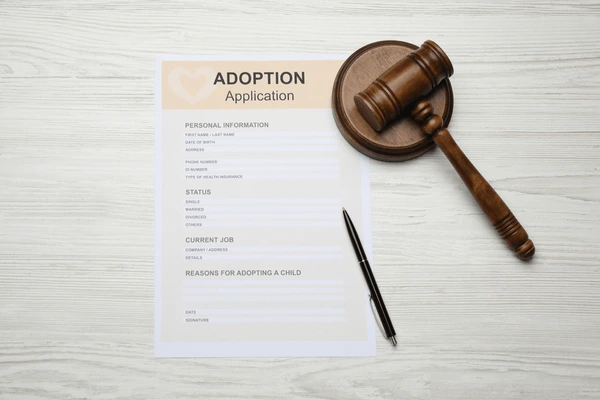Navigating Foster Care: The Legal Process and What You Need to Know
Table of Contents
- Introduction
- Understanding How Foster Care Works
- The Legal Framework of Foster Care
- Five Common Questions About Foster Care
- Roles and Responsibilities of Key Players
- The Foster Care Placement Process
- Preparing to Become a Foster Parent
- Reunification, Adoption, and Other Outcomes
- Potential Challenges and How to Address Them
- Conclusion and Strong Call to Action
Introduction
Understanding How Foster Care Works

A Temporary Safe Haven
Government Agency Involvement
Team Approach
Permanency Goals
The Legal Framework of Foster Care
Child Welfare Laws and Regulations
Court Hearings and Judicial Oversight
Legal Representation

Key Legal Milestones
- Removal Hearing: Determines if there is sufficient cause to remove the child from the home.
- Dependency or Adjudication Hearing: Determines whether the child meets the legal criteria for court jurisdiction (e.g., abused, neglected, or dependent).
- Disposition Hearing: Establishes the foster care plan and sets out services or requirements for the biological parents to achieve reunification.
- Status Review Hearings: Monitors the family’s progress and adjusts the plan if necessary.
- Permanency Hearing: Decides the long-term plan for the child—often reunification, adoption, or another permanent living arrangement.
Five Common Questions About Foster Care
1. How does foster care work in terms of legal timelines?
Foster care is subject to court-mandated timelines, typically requiring a review within a few months of placement and every six months thereafter. Federal guidelines encourage courts to determine permanency within 12 to 15 months of a child entering care. However, these timelines can vary by state and be extended if the court believes more time is warranted for reunification.
2. What financial support do foster parents receive?
Foster parents usually receive a monthly stipend or foster care reimbursement to offset the costs of caring for a foster child (like food, clothing, and other daily expenses). This amount varies depending on the child’s age, special needs, and state or county policies. Foster parents may also receive additional support services like respite care, training, and access to medical coverage for the child.
3. Are there different types of foster placements?
Yes, there are several, including:
- Traditional Foster Care: A certified foster family takes the child into their home.
- Therapeutic or Treatment Foster Care: For children with significant emotional or behavioral challenges requiring specialized training and support.
- Kinship Care: Placement with relatives or family friends approved as foster caretakers.
- Group Homes or Residential Treatment Centers: Used when a child has complex needs that require structured, professional support.
4. Can foster parents adopt the child?
Often, foster parents become adoptive parents if reunification is deemed impossible or unsafe. Before adoption becomes an option, the court must terminate the biological parent’s rights, or the parents must voluntarily relinquish them. Prospective foster parents need to understand that adoption is never guaranteed—reunification remains the priority unless a court decides otherwise.
5. What role do biological parents have while their child is in foster care?
Roles and Responsibilities of Key Players
Child Protective Services (CPS) Caseworker or Social Worker
- Acts as the primary point of contact for the foster child and foster parents.
- Arrange visitations with birth parents or siblings.
- Monitors the child’s well-being and compliance with the court-ordered plan.
- Coordinates with service providers such as counselors, health professionals, and educators.
Foster Parents

- Provide daily care, supervision, and nurturing to the child.
- Document the child’s progress, needs, and behaviors.
- Attend court hearings and meetings to discuss the child’s development.
- Collaborate with the birth parents (as appropriate) and the caseworker.
Birth Parents
- Work on a case plan intended to address the issues that led to their child’s removal.
- Participate in court hearings and social services.
- Maintain regular contact with the child if allowed by the court.
Attorneys and Guardians ad Litem (GALs)
- The child, the birth parents, and sometimes the foster parents may each have their legal representative.
- The GAL or CASA (Court Appointed Special Advocate) focuses on the child’s best interests and can recommend permanent placement to the court.
The Court (Judges)
- Oversees the child’s placement and monitors the progress of the case.
- Makes legally binding decisions regarding visitation, reunification, or adoption.
- Review compliance with court orders and the child’s well-being throughout the foster care placement.
The Foster Care Placement Process
When a child enters foster care, several critical steps follow to ensure their safety and assess the best long-term solution.
Emergency Removal and Shelter Care
- Initial Investigation: A report of neglect or abuse triggers an investigation. If CPS deems the child unsafe, they initiate an emergency removal.
- Shelter Care Hearing: Within a short time (often 24–72 hours), a hearing is held to determine if the emergency removal was justified and if the child should remain in care.
Placement Decisions
- Matching Child with a Home: CPS looks for a suitable foster home or kinship placement. If a relative is deemed appropriate, kinship care is often preferred. Otherwise, a certified foster family is chosen based on the child’s needs.
- Initial Foster Home Visit: The child is placed, and the foster parents receive basic information about the child’s health, background, and immediate needs.
Developing the Case Plan
Once the child is in foster care, CPS and the court create a case plan outlining steps for the birth parents to recover custody. This can involve:
- Substance abuse treatment
- Parenting classes
- Anger management or domestic violence programs
- Consistent visitation schedules
- Mental health services
Monitoring and Review
Preparing to Become a Foster Parent
Training and Licensing
Certification
Matching with a Child
Emotional and Practical Preparation
- Mentorship: Connecting with experienced foster parents can be invaluable.
- Counseling or Therapy: This is for both the child and the foster family to address emotional needs.
- Respite Care: Short-term relief for foster parents when necessary.
Reunification, Adoption, and Other Outcomes
A foster child’s ultimate goal, as stated earlier, is permanency. This can take several forms:
Reunification
Most children in foster care eventually return to their birth parents once the court is satisfied that the home environment is safe. This typically involves completing a case plan, providing evidence of behavioral change, and perhaps providing ongoing supportive services.
Adoption

Guardianship
Aging Out
Potential Challenges and How to Address Them
Multiple Placements
Emotional and Behavioral Issues
Financial Strain
Legal Complexity
Community Perceptions
Conclusion and Strong Call to Action

Ready to take the next step?
Your Legal Solution Starts Here
Clear, practical legal advice you can count on when it matters most